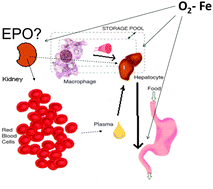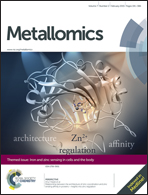Iron and oxygen sensing: a tale of 2 interacting elements?
Abstract
Iron and oxygen metabolism are intimately linked with one another. A change in the level of either metabolite results in activation of common pathways. At the heart of these responses lies a group of iron and oxygen dependent enzymes called prolyl hydroxylases. Prolyl hydroxylases (PHDs) require both iron and oxygen for optimal activity and their biological activity is to carry out the critical post-translational modification of the addition of a hydroxyl group to specific proline residues within Hypoxia Inducible Factor (HIFs)-well known transcription factors originally thought to regulate responses to hypoxia but which are now known to regulate key iron metabolism proteins too. The addition of the hydroxyl group ultimately leads to the unbiquitylation and destruction of HIFs, thus PHDs control appropriate HIF transcriptional responses depending on cellular oxygen or iron levels. There are two major HIFs; HIF1α and HIF2α. In terms of responses to iron HIF2α is of major importance in key tissues such as the intestine where several iron transporters (Ferroportin, Dcytb) contain HREs within their promoters which bind HIF2α. Furthermore the recent discovery that HIF2α contains a 5′ iron responsive element (IRE) has underlined the importance of HIF2α as a major player in iron metabolism. This review brings together recent findings with regard to the HIF2α/IRP network as well as other aspects of iron sensing in cells and tissues.

- This article is part of the themed collection: Iron and zinc sensing in cells and the body

 Please wait while we load your content...
Please wait while we load your content...